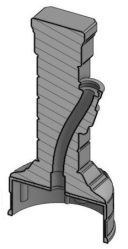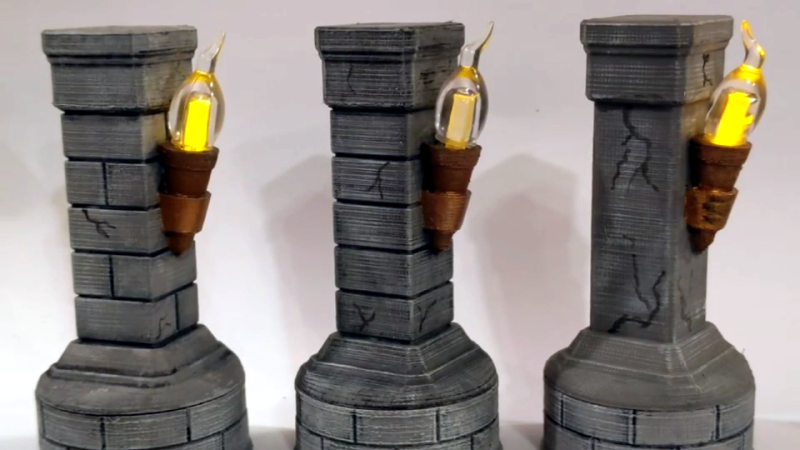
[ROBAGON] makes miniature, 3D-printable gaming terrain and features like these stone pillars with flickering torch. His model isn’t free to download (though it’s under $2 at the time of writing), but the part that impressed us was his clever way of using electric tea lights to create a flickering torch effect without needing any soldering or wiring whatsoever.
His solution was to make the base of the pillar large enough to fit an electric tea light, which uses a flickering LED to simulate a candle flame. The molded plastic “flame” is removed from the tea light and placed in the torch sconce, while the tea light itself goes into the base. A short segment of clear acrylic rod is used as a light pipe, running from the tea light’s LED to the base of the torch.
It’s a simple, effective, and economical solution that doesn’t require running or soldering a single wire and you can see it work in the brief video embedded below. Now all that’s missing for those Dungeons & Dragons sessions is this custom calculator.
















Neat. But I’m somewhat disappointed: when I looked at the miniature picture in the feed reader I thought that it was done with neon bulbs and a high-voltage electric field. Would probably make for a more moody torch :-)
Inspect the torch… you receive a shock.
Where’s the speaker? (http://www.instructables.com/id/Listen-to-a-led-tea-light/)
That was the last generation of LED candles. The actual ones have the chip integrated into the LED, and it’s no longer a sound chip, but a specialized LED flicker chip. Some even seem to use a (pseudo) random generator, so they don’t repeat the same pattern every few seconds.
Don’t you always ask yourself, while watching a movie where someone enters an ancient tomb: Who the hell lights and replaces all the torches? It would need an army of servants to keep them all burning constantly, but nevertheless nobody ever shows.
I do ask myself about the convenient torches, but I usually get distracted wondering how the mechanisms like sliding doors, traps, and so forth work perfectly after centuries of neglect.
They weren’t built by the contractor who offered the cheapest contract. :o)
The cult of the person in the tomb switch from torch maintenance to hiding and activating the deathtraps once an explorer shows up.